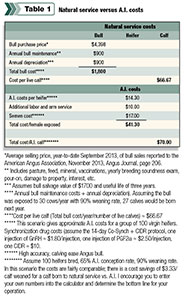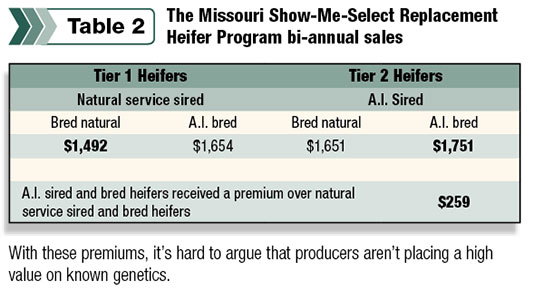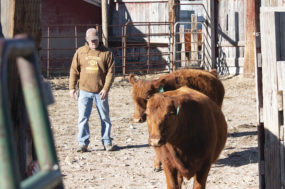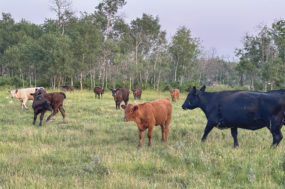I start every A.I. school the same way: I ask the producers to tell me about themselves, their operation, and most importantly, why they decided to come to A.I. school.
Their responses usually include: “Yearling bulls are getting too expensive,” “I bought a bull that was supposed to be calving ease and he wasn’t,” and “I want to shorten my calving season.”
It’s interesting to hear straight from producers’ mouths what they perceive to be the benefits of A.I., but what about everyone else?
With less than 5 percent of the beef cows in the U.S. being bred A.I., we certainly haven’t convinced everyone of the true value.
The value of A.I. vs. the bull
When it comes right down to it, the balance sheet is what drives the decisions.
Click here or on the image above to view it at full size or in a new window. (PDF, 27.3 KB)
We can talk all day long about the value of more calves being born early in the calving season, the value of using proven genetics and the value of increased uniformity (and we will), but if I can’t show that in many cases the cost of A.I. is very comparable, if not cheaper than natural service, you are probably going to turn the page without finishing this article (see Table 1).
In this scenario, the costs are fairly comparable; there is a cost savings of $3.33 per calf weaned for a calf born to natural service versus A.I. I encourage you to enter your own numbers into the calculator and determine the bottom line for your operation.
The value of more calves born earlier in the calving season
Now that we’ve talked about how much an A.I. program is going to cost you, let’s discuss how an A.I. program can help put money in your pocket.
When I start the discussion of synchronization and timed A.I. with a producer who has never used it before, the first concern is: If they breed all their cows on the same day, they will all calve on the same day, and it will be during a snowstorm.
A study done by the University of Missouri showed cows that conceived on the same day to fixed-time A.I. gave birth to calves over a 16-day to 21-day period, with no more than 12 to 22 percent of calves being born on a single day. Hopefully, this will help you sleep a little easier at night.
One of the biggest advantages of synchronization and fixed-time A.I. is the ability to have more calves born earlier in the calving season.
At the University of Missouri Thompson Farm, calf crop distribution was analyzed for the first 46 days over 10 calving seasons.
There were three years of natural-service breeding that included 526 calvings, two years of fixed-time A.I. with 397 calvings, and five years of estrus detection and A.I. with 1,040 calvings.
At the respective day 16 of the calving season, 38 percent of natural service cows had calved, 54 percent of the estrus detection and A.I. cows had calved, and 62 percent of the fixed-time A.I. cows had calved.
By day 21 of the calving season, those numbers were 51 percent, 59 percent and 66 percent, respectively.
When you consider that a calf will gain 2 to 3 pounds per day, and calf prices hovering upwards of $1.50 per pound, a calf born earlier in the calving season is worth a lot more than the additional cost associated with A.I.
In addition to heavier calves, a shortened calving season with large numbers of calves sired by the same bull will result in a more uniform calf crop, which we all know is more attractive to calf buyers.
The value of replacements
A.I. adds value to your replacements; however, it is not immediately seen or felt on the balance sheet, so it is difficult to put a value on what proven genetics going back into your herd are worth.
The Missouri Show-Me-Select Replacement Heifer Program holds bi-annual sales in which participating producers can market bred heifers.
The heifers are split into two tiers. Tier one heifers are natural-service sired, while tier two are A.I.-sired. The two tiers of heifers are sorted again with heifers that are bred natural-service grouped separately from A.I.-bred heifers.
A summary of the three sales held fall 2010 to fall 2011 is shown in Table 2.
With those premiums, it’s hard to argue that producers aren’t placing a high value on known genetics.
The additional labor and monetary inputs can be a big concern when making management changes, but hopefully I have given you something to think about in regards to implementing an A.I. program.
I would encourage you to use your own numbers and calculate what the value of A.I. could be for your operation. ![]()
References omitted due to space but available upon request. Click here to email an editor.

Sarah Thorson
Beef Education Manager
Genex Cooperative Inc.










